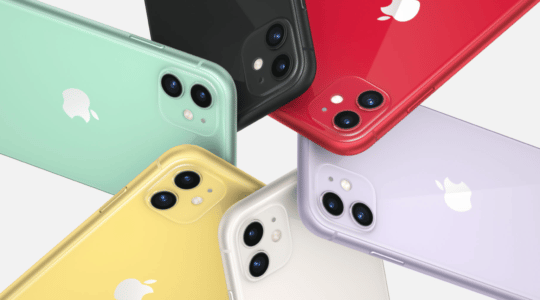Now that we’ve said goodbye to 2013 and hello to 2014, mobile marketers are beginning to think about their marketing campaigns for this new year. While many tactics are tried and true, such as in-app advertising and banner ads with mobile networks, there are several other options for your marketing strategy that could drive the same – if not better – results. If you’re a mobile marketer, here are 5 fresh mobile advertising strategies to consider in 2014.
In App Messaging
If one of your goals for 2014 is to increase user retention and the LTV of your users, pay attention to the possibility that utilizing in-app messaging could benefit your marketing campaign this year. In-app messaging, or pop-ups that appear while users are engaged at some point while using your app, can help you connect with your users in very specific ways that you control. Have you identified a cohort of users that have been a user of your app for quite some time and continue to use it on a regular basis? You may want to leverage in-app messaging to encourage them to leave a review the next time they open the app. Are your users coming back to your game multiple times per day, yet not making an in-app purchase to sneak ahead to the next level or buy extra lives? Using in-app messaging, you can target these users and offer them a chance – on the spot – to make that in-app purchase to enhance the game experience they’re already addicted to. By offering dialogue with your customers, you can not only drive further engagement with your app, but also understand how to build a better product.
Using Hashtags
If you’re a mobile app marketer, you’re likely familiar with Twitter hashtags as a way to tag your tweets so they can be easily found in search, catalogued as part of a conversation or just a way to make a witty remark. However, you can also leverage hashtags as part of your advertising strategy by integrating tweets as part of a promotional campaign to drive awareness and downloads of your app, especially if the app is part of a promotional campaign for one of your brand’s other products. In 2013, LG launched a mobile game called LG Ticket Hunter to create buzz about its new L-series handset. To promote the app, LG launched a five-day contest targeted towards a younger female audience to use the app to find 25 exclusive pairs of VIP tickets for the the pop band One Direction at the LG Arena in the UK. Each pair of tickets was hidden in a different location, and as the teens tweeted a specific hashtag using the app – #lgtickethunter – the map on LG’s app zoomed in closer to each location, and for every tweet LG received, the map zoomed in tighter, eventually revealing the locations of each pair of VIP tickets. Thanks to this mobile promotion and the Ticket Hunter app, the #lgtickethunter hashtag was used 58,000 times and the L-series phone saw a 28% increase in sales during the campaign.
GeoTarget
You likely know that setting location-based parameters is important when targeting your advertising. However, using location-based behavioral targeting can be a fresh approach to consider as part of your mobile advertising campaign strategy in 2014. If your app is used to drive customers into brick-and-mortar stores, you likely already know who your target demographic is. By serving mobile ads to this demographic, as well as targeting them based on behavior – such as whether they have visited your competition within the past 30 days – you will be able to utilize geotargeting to really hone in on potential customers who are likely to convert on your advertisements. With this approach, you will can not only increase mobile ad impressions, but also foot traffic to your stores and increase sales as well.
MMS / SMS
2013 was a monumental year for mobile marketing as smartphone penetration reached its tipping point by exceeding 50% of consumers. While only a few years ago SMS was limited to only 160 characters of text, it’s a completely different ballgame now as you can send links to the mobile web, e-commerce pages, apps, videos, and more. With smartphone penetration being so high (and likely to significantly increase in 2014), utilizing SMS/MMS messaging as a mobile marketer is another approach to consider this year. By using SMS, you can advertise your app with traditional advertising (such as on a billboard or on TV) and invite users to text a phrase to a shortcode to get a reply with a link to download your app which deep links users right to your app in the app store, removing the cumbersome process of searching for the right app. This strategy will likely lead to more app downloads, which in turn will lead to more engaged customers – as well as whatever other goals you have for your app.
Additionally, you can use a landing page on your website to increase app downloads and include not just a link to app stores, but also an option for users to enter their phone number to get a text message with a direct link to download the app. As downloading an app on the desktop requires mobile phone users to sync their phone with their computer (which isn’t always easy, especially if they’re at work or on a friend’s computer), utilizing SMS as a marketer can be an easy to increase app downloads – wherever your potential user may be.
Interactive Games
If you’re a marketer for an established business or brand, you may want to consider developing and promoting a mobile game to encourage engagement with your business beyond your store’s walls and build buzz. In 2013, Chipotle launched an advertising campaign called “The Scarecrow”, which consisted of an animated short film accompanied by a smartphone game to demonstrate the industrialized world of processed food and promote the company’s approach to sustainability. The game – which was downloaded more than 300,000 times – was an interactive yet fun approach to engaging users in this conversation, which led these users to create buzz about the campaign via social media, as well as consider Chipotle the next time they were hungry. Other big brands, such as Victoria’s Secret, have launched similar interactive mobile games to encourage customers to stay connected to the brand with fun, engaging content that keeps the brand in front of customers – even when they aren’t shopping. Interactive games can also help you build buzz about your business via these customers as they talk about their experiences with your interactive mobile games via social media – and, if you’re lucky, as press picks up your creative campaign, too.
As a mobile marketer considering your advertising strategies for 2014, be sure to break out of the norm and routine you’ve been in the for the past year and consider a fresh approach. Whether you adopt SMS messaging, start geotargeting new customers, or develop an interactive game, there are several new strategies to consider this year that will bring new life to your campaigns, and new customers knocking on your real or proverbial door with more downloads than before.
Author
Becky is the Senior Content Marketing Manager at TUNE. Before TUNE, she handled content strategy and marketing communications at several tech startups in the Bay Area. Becky received her bachelor's degree in English from Wake Forest University. After a decade in San Francisco and Seattle, she has returned home to Charleston, SC, where you can find her strolling through Hampton Park with her pup and enjoying the simple things in life.




Congratulations! Apple has accepted your app and now it is live in the AppStore. Now you just sit there and wait for downloads?
Don’t expect to suddenly see thousands of downloads That, unfortunately, very rarely happens unless you promote your app. Here’s a check list to help you get the word out to potential users.
https://www.snappii.com/resource-center/10-tips-market-live-app/